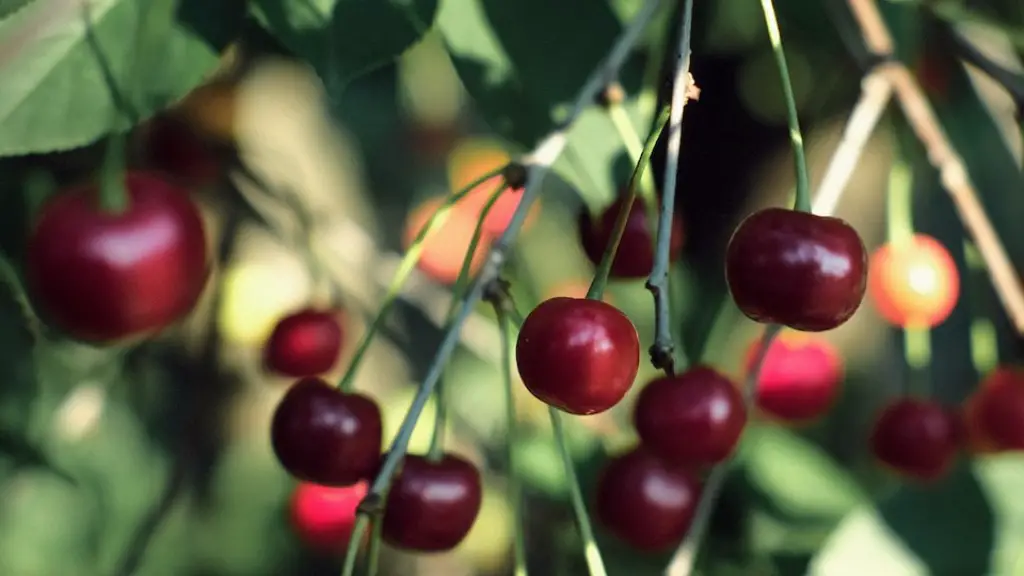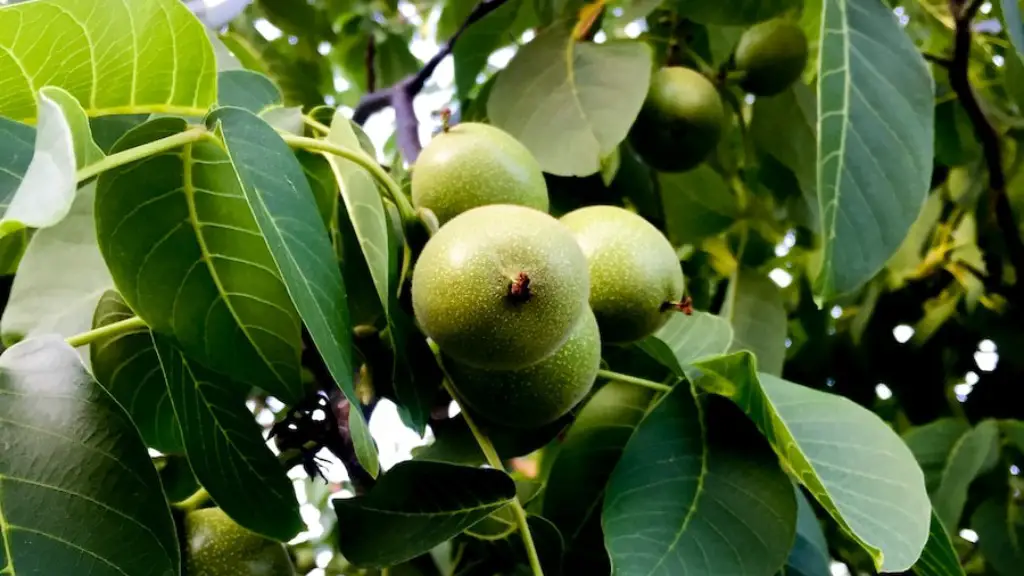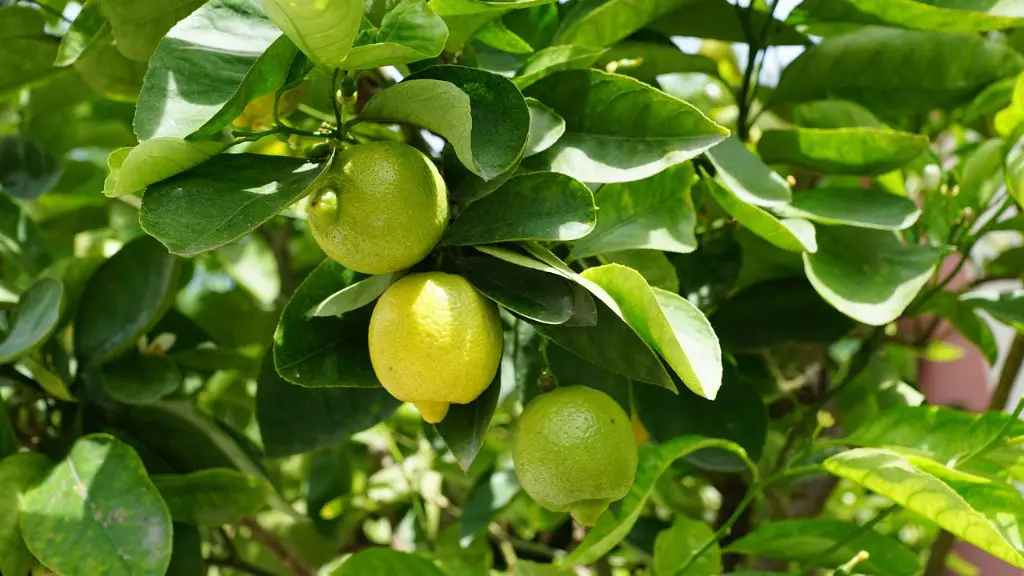Fertilize Avocado Trees
Avocado trees are tropical, evergreen, nutrient hungry plants with a shallow root system. To maintain healthy trees and consistent yields, they need to be fertilized regularly. When fertilizing an avocado tree, it is important to use an organic-based fertilizer that is specifically formulated for avocado trees. Too much of a nitrogen-rich fertilizer can cause leaves to yellow and drop, which can lead to tree death. Vinegar can be used to balance pH levels, enabling the roots to absorb more nutrients from the soil. Furthermore, irrigation systems should also be set up to ensure that the trees receive the recommended one-inch of water every week. This will help to keep the soil moist, even in times of drought.
Select the Right Avocado Tree
There a number of avocado varieties that can be purchased, including Haas, Reed, and Fuerte, but not all varieties are suitable for all climate types. Selecting the right avocado tree for the right climate is essential. A general rule of thumb is that Fuerte and Zutano varieties need a warmer climate while the Hass and Gwen varieties prefer cooler temperatures. If a tree struggles to leaf out and/or produce fruit, it is likely to be due to an unsuitable climate.
Prune Avocado Trees
Pruning is essential for an avocado tree’s health and vigor; it encourages new growth, helps to keep the tree’s shape, controls the amount of fruit, and can help with harvesting. To avoid stressing the tree, pruning should be done in rounds rather than all in one go, and should commence when the tree is between its first and second year of growth. For a proper trim, all dead branches, diseased and outdated fruit must be removed. It is also recommended to adhere to a strict pruning program throughout the fruiting season, to support tree growth and promote fruit production.
Minimize Disease and Pests
Diseases and pests are a major threat to any plant, especially perennials. Avocado trees are prone to pests such as aphids and scale, as well as a number of fungal diseases that can cause root rot and leaf blight. To reduce the likelihood of such problems, effective pest control and prevention techniques should be put in place. This includes regular soil inspections, application of fungicides and pest-repellants, and sound hygiene practices. Deep aeration to reduce compaction and promote better drainage can also help to prevent fungal diseases.
Provide Proper Sunlight and Air Flow
Avocado trees need lots of direct sunlight and air circulation to remain healthy. Without it, the canopy can become too dense, shading out much of the tree, reducing fruit production. To maximize your tree’s exposure to light and air flow, it should be planted on a slope, in an open area, or near a wall where air deflects off the wall and corrects air turbulence. Trees should also be at least eight feet away from other trees or buildings to provide adequate space for the branches to grow.
Watch Out for Cold Temperatures
Avocado trees are tropical plants and sensitive to cold temperatures. Depending on the variety, temperatures below 25 degrees Fahrenheit can be fatal to the tree, though some varieties may survive temperatures as low as 20 degrees Fahrenheit. If cold temperatures are a concern, it is important to plant hardy varieties of trees and/or provide extra protection. This can be done by setting up windbreaks, utilizing frost cloths, applying straw or wood chips to the base of the tree, and/or positioning potted trees indoors.
Fertilize in Moderation
Fertilizers can be a beneficial nutrient source for avocado trees, but if the wrong type is being used or if too much is being added, it can damage the tree and lead to fruit loss. For instance, using chemical fertilizers will not only contaminate the fruit, but can burn the roots, rob the soil of essential nutrients and increase salt levels in the soil. It is essential to only use organic-based fertilizers that contain essential nutrients such as nitrogen, phosphorous, potassium, and copper.
Manage the Soil Around Avocado Trees
Soil management practices are essential for avocado tree health and optimal yield. Avocado trees love soil that is high in organic matter and well-drained. To improve and maintain soil pH levels and promote drainage, soils should be mulched with a generous layer of organic compost, wood chips or wood shavings. Furthermore, proper soil aeration – via deep plowing, rototilling and/or raised beds – will allow for greater access to oxygen for the plant’s roots and all soil-borne microorganisms.
Repot Avocado Trees
Avocado trees should be re-potted every two to three years, depending on their size. This ensures that the tree gets the nutrients and drainage it requires. As avocado trees are shallow-rooted, it is important to use containers with a large surface-area and depth ratio such as a terracotta pot or a half-barrel. The new soil should be of a high quality and well-drained, and containers should be filled with drainage material such as perlite or stones – to cover the drainage holes – to make sure that water drains away easily.
Provide Further Protection During Winter
The cold temperatures during winter are a major threat to any avocado tree’s survival, as the tree cannot survive for more than a few minutes in temperatures below 25 degrees Fahrenheit. To reduce the risk of frost damage to an avocado tree, it is recommended to attach a fish tank bubbler – a device that creates an air bubble – to the watering tap, setting it to spray water in a continuous beam. This will create a cozy microclimate around the tree, preventing the temperature from plummeting by several degrees. Additionally, wrapping a frost cloth around the tree will help to keep the temperatures in check.
Care for the Soil During Fruiting Season
It is beneficial to care for the soil by adding fertilizer and amending the soil around the tree two to four weeks prior to flowering. This will help to improve soil structure, increase moisture retention and reduce stress. Furthermore, water the soil during the fruit-setting stage to keep the micro-organisms alive and assist the tree in gaining adequate nutrition. Mulching during the flowering and fruit-setting stages also helps to conserve soil moisture and reduce both water and fertilizer needs.
Remove Damage Fruits and Branches
As avocado trees are very sensitive to loads that have a constant weight, it is important to thin out fruits – removing the damaged and extra fruits – with the goal of preventing branches from cracking, or the tree from becoming over-burdened. To maintain good aeration, lower branches should also be removed. It is best to thin the fruits when they are roughly one-third their mature size.
Monitor Avocado Trees Periodically
In order to maintain a healthy avocado tree and prevent diseases and pests, it is important to inspect it at least twice a year. Regular monitoring allows for pest and diseases to be identified and treated promptly, as well as providing an opportunity to observe the tree’s growth for any signs of distress. Any abnormalities, such as leaf yellowing, should be reported to a knowledgeable arborist straight away.
Remove Unhealthy Or Damaged Branches
Avocado trees require regular pruning to promote new growth, manage the shape and size of the tree, and maintain healthy production of fruit. If a branch appears dead or diseased, it should be carefully cut off and removed. Similarly, crossing branches, dense interlocking limbs and inward growing branches should also be trimmed. Always use a sharp shears, as a blunt tool can destroy the growth buds.
Water Avocado Trees in Moderation
Avocado trees require water on a regular basis to remain productive, and the amount and timing of watering will depend on your climate, soil type and weather conditions. For instance, during periods of intense summer, avocado trees should receive an additional half inch of water per week. However, it is important to avoid over-watering, as this can cause soil erosion, root decay, and potential fruit drop.
Provide Support During Heavy Fruiting
Avocado trees should be provided with physical support – such as stakes and wires – if they are carrying a heavy yield. This type of support is essential to ensure that the weight of the fruit does not bring down the branches. To be effective, you must ensure that the stakes and wires are placed in strong, limb-free areas and staggered at various heights; placing them all at the same height can create more stress on the tree and reduce fruit production.
Inspect Trees for Signs of Infestation
Pests and diseases can be a major threat to any plant and avocado trees are no exception. To protect trees from infestations, monitoring is essential. Systematic insect and disease inspections should be done once a month, especially during the fruiting season. Additionally, fruit should be harvested frequently and removed from the tree, as this can attract pests. Furthermore, mulching and pest-repellants can also be used to reduce the likelihood of infestations occurring.



